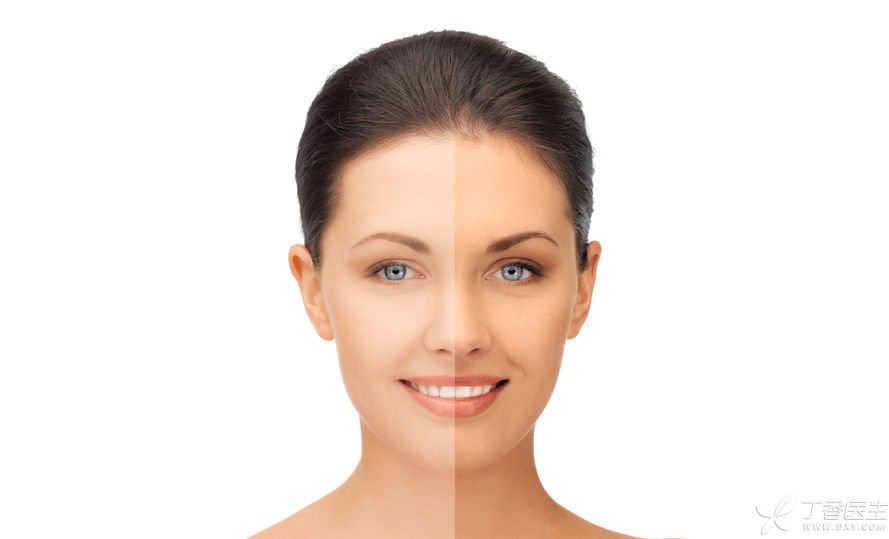
This thing is: sun protection.
In the eyes of many people, sun protection is to protect us from sunburn. In fact, the more important function of sun protection is to protect us from sunburn and delay skin aging.
Sometimes, when you put on sunscreen, you still get a lot of tanning. This may be because you chose the wrong product or because you applied it in the wrong way.
If you don’t protect yourself from the sun, you will grow old.
Under strong ultraviolet radiation, the skin will be tanned, sunburned, and the color spots will worsen. In the long run, photoaging will occur and even lead to skin cancer.
Photoaging is mainly manifested in rough and flabby skin and deepening wrinkles. In other words, sunlight will accelerate the aging of your skin.
Specifically, ultraviolet rays in sunlight can be divided into short wave ultraviolet (UVC), medium wave ultraviolet (UVB) and long wave ultraviolet (UVA).
Daily sun protection, mainly to prevent UVA and UVB damage. Among them:
UVB can cause skin redness, sunburn, allergy, inflammation, etc.
UVA is the behind-the-scenes [black] hand that causes skin blackening, color spots aggravation and accelerated aging.
How effective is the net red sunscreen clothing?
When it comes to sun protection, the simplest and cruelest way is [hard sun protection]: wear long-sleeved trousers, or use sunshade umbrellas, sunshade hats, etc. to prevent skin from being exposed to the sun.
Recently, a kind of thin and transparent sunscreen clothing is very popular, with bright and colorful colors and prices ranging from several yuan to several thousand yuan. How is its sunscreen effect?
Dermatologists tell you: the thicker the texture, the darker the color of clothes, the better the sunscreen effect.
If you want to buy professional sunscreen clothing, you need to pay attention to these points:
1. Look at the implementation standard on the tag. The current national standard is GB/T 18830-2009.
2. Look at the UV protection coefficient UPF value and UVA transmittance. The larger the UPF value (40 +), the better the UV protection effect. The UVA value should be less than 5%.
3. Look at the material. Other conditions are the same, anti-ultraviolet ability: polyester > nylon > viscose.
Sunscreen, this is the only effective way to use it.
When it comes to the better sun protection effect of dark and thick clothes, some people will say: But it’s very hot!
Don’t panic, we can also use [soft sunscreen], that is, apply sunscreen products such as sunscreen to the skin.
1. Physical sun protection VS chemical sun protection
Sunscreen is generally divided into physical sunscreen and chemical sunscreen.
Physical sun protection mainly plays a protective role by reflecting and scattering ultraviolet rays. It can protect UVA and UVB at the same time.
Chemical sunscreen is a protective effect by absorbing specific wavelengths. There are usually absorbents that only target UVA, only target UVB and both target UVA & UVB.
Non-sensitive skin can choose mixed sunscreen and chemical sunscreen. However, if it is children, sensitive skin and acne skin, physical sunscreen is recommended.
You can pay attention to the trade name when purchasing. Many physical sunscreens will be specially marked with words such as [pure physics] to help consumers make choices.
2. What do you think of the sun protection index?
When selecting sunscreen products, attention should be paid to SPF value and PA value, which respectively represent the ability to prevent UVB and UVA.
As far as daily protection is concerned, it is recommended that you choose SPF 15, PA + + sunscreen products. If it is outdoor sports, SPF 30 and PA + + + are enough to resist ultraviolet damage.
STEP 3 Remember to make up for it
If it is chemical sunscreen, it should be wiped 30 minutes before going out. Using this half hour, the epidermis can absorb the organic sunscreen components in the sunscreen to a certain extent and maintain a good sunscreen effect.
If it is purely physical sunscreen, it does not need to be applied in advance.
In addition, because chemical sunscreen agents will decompose under light and are more likely to be lost, they need to be applied every 2 hours. If it is a physical sunscreen, it can be extended appropriately.
